12 Engaging First Day Activities In Secondary ELA
Sharing is caring!
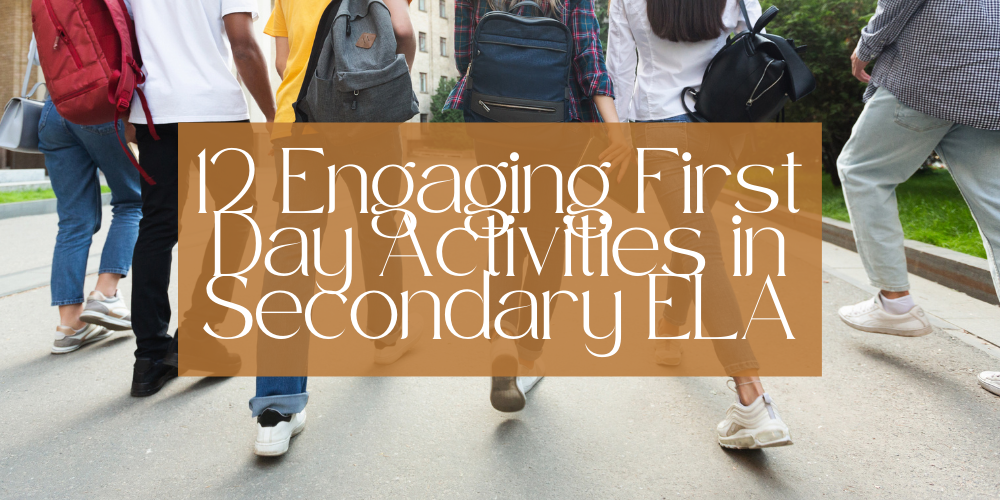
Welcome to Class!
It’s the first day of school and you have a new group of students sitting in front of you. Some smiling back at you, others more hesitant, and a few with their heads down, earphones in or staring out the window. How can you engage every student and set a positive tone from day one in your secondary ELA classroom?
Thankfully, you don’t need to wrack your brain for new ideas – we’ve got you covered! Continue reading for the best first day activities for Secondary ELA from your fave Instagram and TPT ELA educators.
Getting to know you
As a teacher, Samantha from Samantha in Secondary’s top priority is getting to know her students. Forget the boring syllabus review and strict rules – building a safe and supportive classroom culture always starts with relationships. And what better way to get to know each other than through the Enneagram, a personality framework that can help understand others and ourselves?
In fact, Samantha wrote about this topic for Truth for Teachers and has even created a pre-made resource in her shop to help your students easily learn about the Enneagram. This engaging and personal exercise is not only fun, but also involves some sneaky reading and writing practice. Plus, it’s a great way to get everyone learning and connecting together on day one.
So, if you’re looking for a quick win for the first day of school, check out Samantha’s tips for teaching the Enneagram today. Your students will love learning about this unique and fun concept.
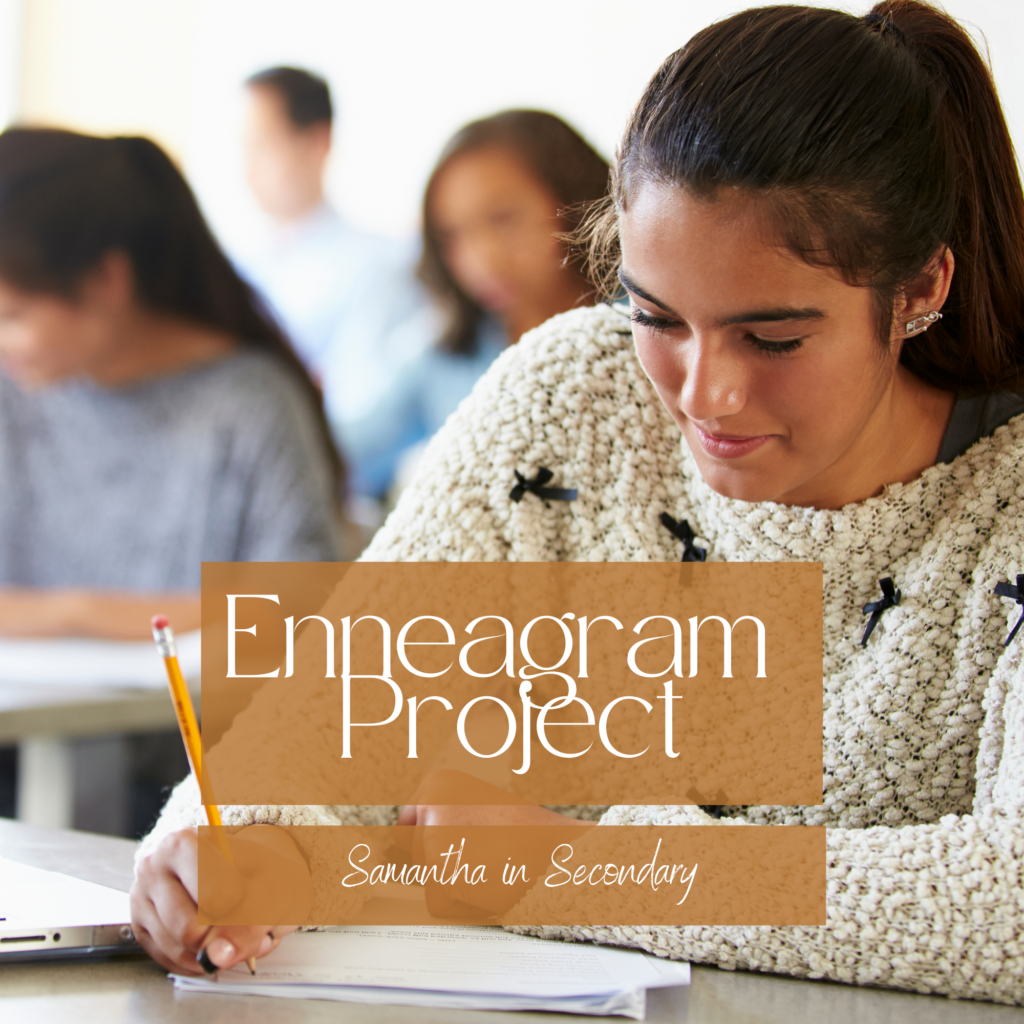
Teamwork Makes the Dream Work
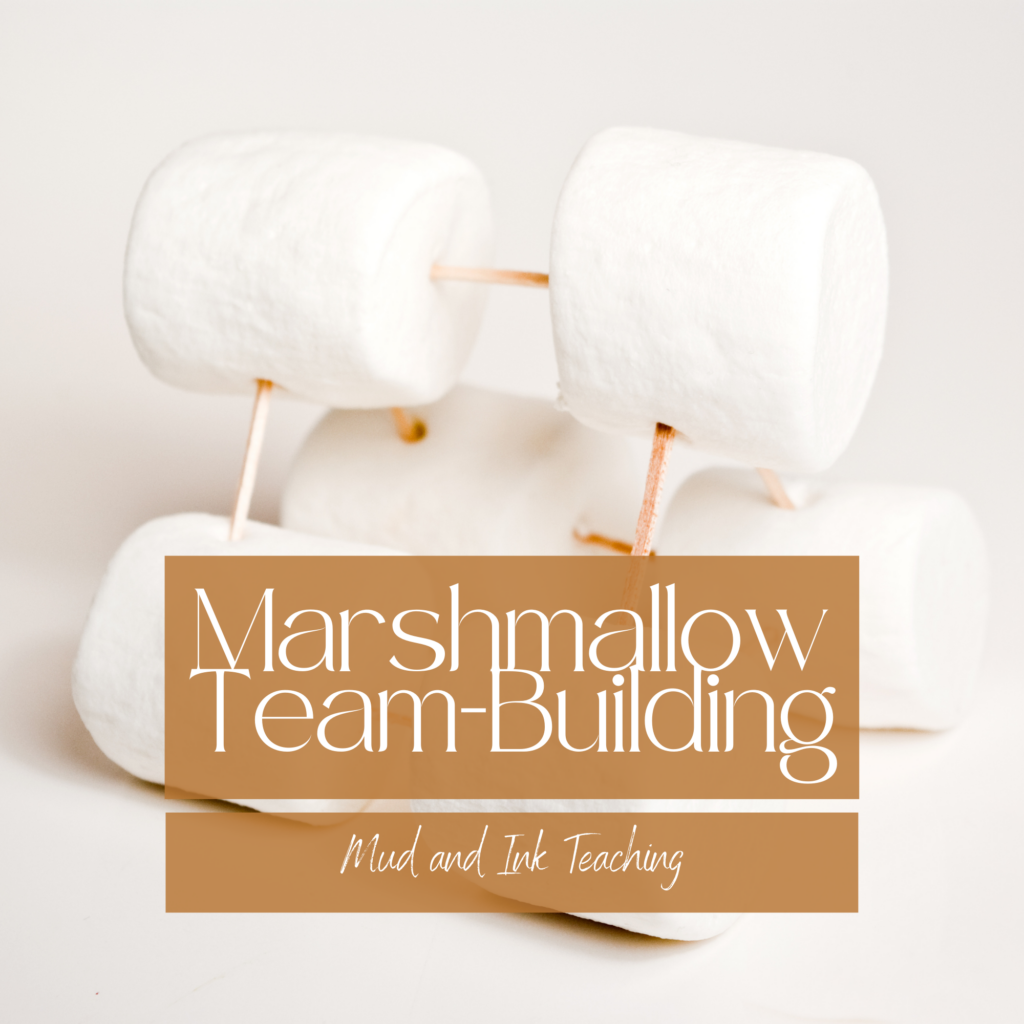
After years of getting it wrong, Amanda from Mud and Ink Teaching finally landed on the best first day of school community building activity: marshmallow team building.
It sounds silly: a half a bag of marshmallows, and handful of toothpicks. Challenge students to build something and watch them go! This simple challenge has become a first day tradition in Amanda’s classroom and the benefits are exponentially powerful.
In Amanda’s course The First 10 Days (The Ultimate Back to School Toolkit), she describes the power of choosing your activities for each of those early days with careful purpose and intention. The marshmallow team building challenge is no exception. With a team building challenge, teachers set the tone for the year that the classroom community is student first, not teacher first. It sends the message that the course is about problem solving and working together, not about a teacher at the front being the all-knowing power in the room.
If you haven’t already, give marshmallow team building a try and then check out the rest of Amanda’s suggestions here.
Stop, Collaborate, and Listen!
The first day jitters don’t stop just because students have reached middle school. It’s important to create an environment that is both welcoming and productive. Carolyn from Middle School Café understands this, and that’s why she starts the year off with a fun and low-risk activity, collaborative posters.
Collaborative posters not only inject a sense of fun and excitement into the first day of school, they also serve as a tool to foster teamwork and cooperation right from the start. By engaging students in a collective poster task, Carolyn ensures that every student has the opportunity to participate and contribute to a shared goal. This early emphasis on collaboration sets a positive tone for the entire year, establishing a classroom culture where students feel supported and encouraged to work together.
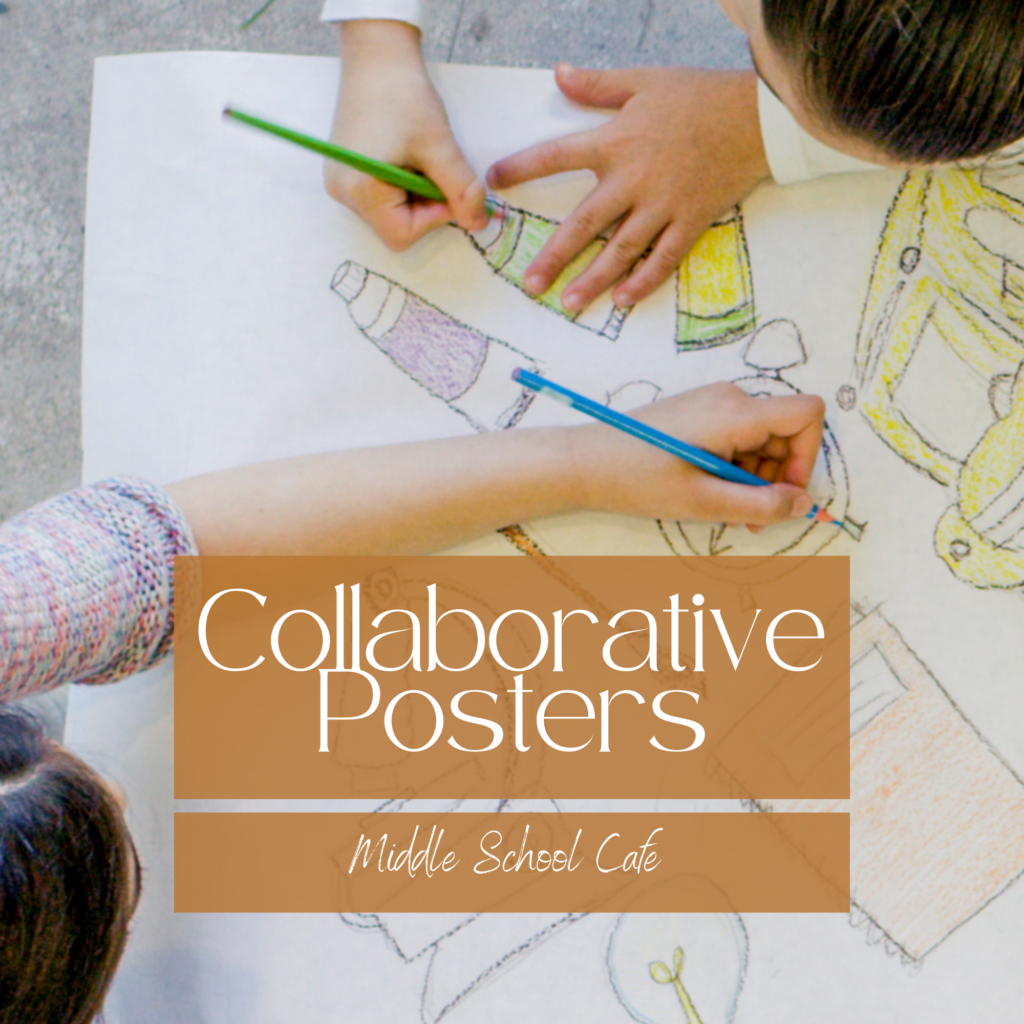
Collaborative posters are a fitting activity for the first day of school, requiring minimal preparation from the teacher. The process is simple, print out the individual poster pieces so that each student has their own unique section. Then ask students to color and cut out their designated piece. Finally, the class works together to create the larger poster that can be hung on a bulletin board or in the classroom library.
When the poster is completed, a quote about reading is revealed which serves as a source of inspiration and motivation in the first weeks of school. This quote becomes a starting point for discussion and reflection, prompting students to ponder the significance of reading and opens the doors for meaningful conversations about the joy of reading.
By implementing collaborative posters, Carolyn ensures that her students start the year on a positive note, laying the foundation for a successful and inclusive learning environment.
Poetry in Motion
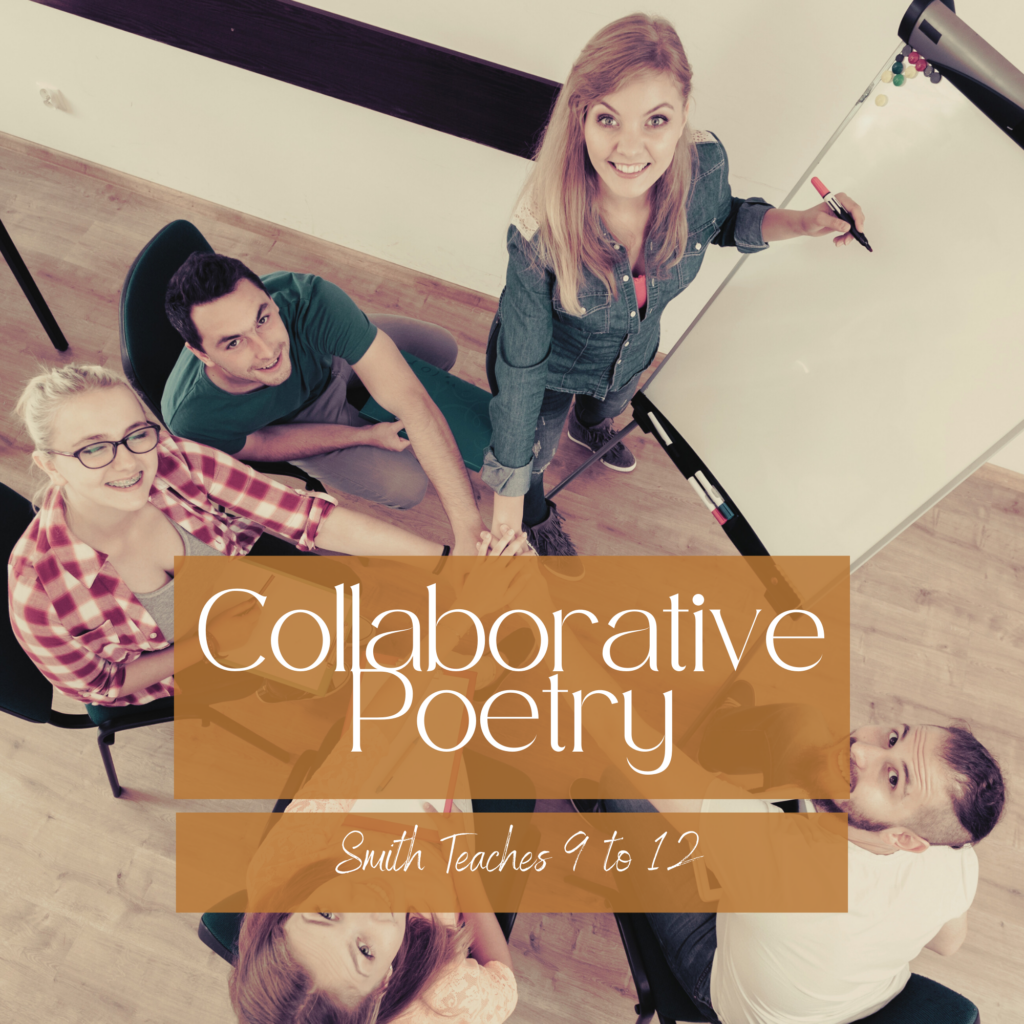
Being intentional in those first days is so important. It gives students an idea of who you are as a teacher/person and what to expect in class. For those reasons Lesa from SmithTeaches9to12.com likes to include poetry early in her courses.
One way to do poetry right away is with collaborative poetry. Here’s how Lesa does it in her class:
- Hang chart paper around the room with a few prompts:
- Write two lines to introduce yourself. One line should include your name and another line with something about who you are.
- Write two lines about your expectations of the course or what you hope to accomplish.
- Write two lines about what makes a good/great teacher.
- Write two lines to share a rule or procedure you’d like to have included in class.
For the two lines, encourage students to rhyme. It makes it a bit more fun, provides a guideline, and keeps the pressure low. You can up the ante (a bit) by asking students to start a line with a specific letter (use the letter of your first and last name for each of the lines to intro yourself) or use a poetic device such as alliteration or simile–make sure you remind them what those are!
- Have students wander to complete the prompts.These are a great complement to first-day stations like these in your classroom.
- Display the collab poems in the first weeks and reference them in get to know you activities that continue or in a lesson on goal setting, etc.
For more poetry ideas to build community check out this post. And get your ready-made templates for collaborative poetry that can be used throughout the school year.
Get a job!
Classroom jobs are not just for middle school! Krista from @whimsyandrigor uses classroom jobs to build community from the very first day. Because this is not a common practice in middle school, it automatically piques kids’ interest and makes them engage even more so with the class. Then, when they see what the jobs are (Barista, Motivational Speaker, for example) and how much it pays (“Literally nothing!”) they are even more eager to submit their application.
Curious about the jobs Krista uses? Watch this short video that breaks it all down.
Want to use Krista’s “Super Official Job Application”? Download it here!
There truly is no limit to what types of jobs you can create in your classroom. Here are a few to consider in addition to the two above:
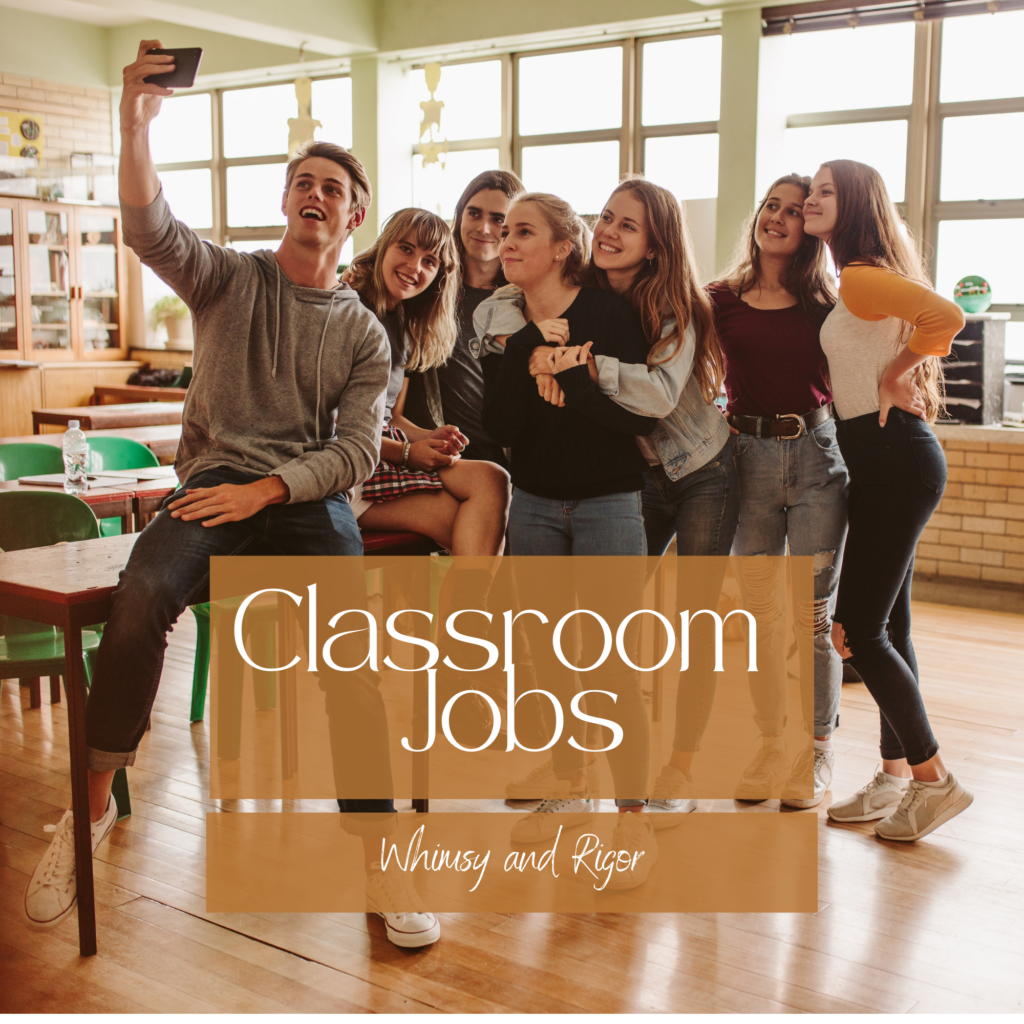
1- Tech-xpert: This person is responsible for helping to troubleshoot basic tech problems and/or distributing and collecting Chromebooks, iPads, etc.
2- Photographer: This person takes photos during class when the teacher requests. Photos are then uploaded to a shared Google Photos folder for families to see.
3- Door Opener: Krista’s classroom door must remain locked and if the door is closed, it gets annoying real quick. This job asks the “employee” to be in charge of getting the door when necessary.
4- Marie Kondo: This person is in charge of quickly tidying the room at the end of class. They will make sure pencils are off the floor, chairs are pushed in, desks are in the correct formation, and anything required to reset the classroom back to a joyful state.
Think big. Think creatively. Think about the community you want to build and create a job to foster those connections.
Want more realistic, creative ideas for the classroom? Join Krista’s email list!
Book It!
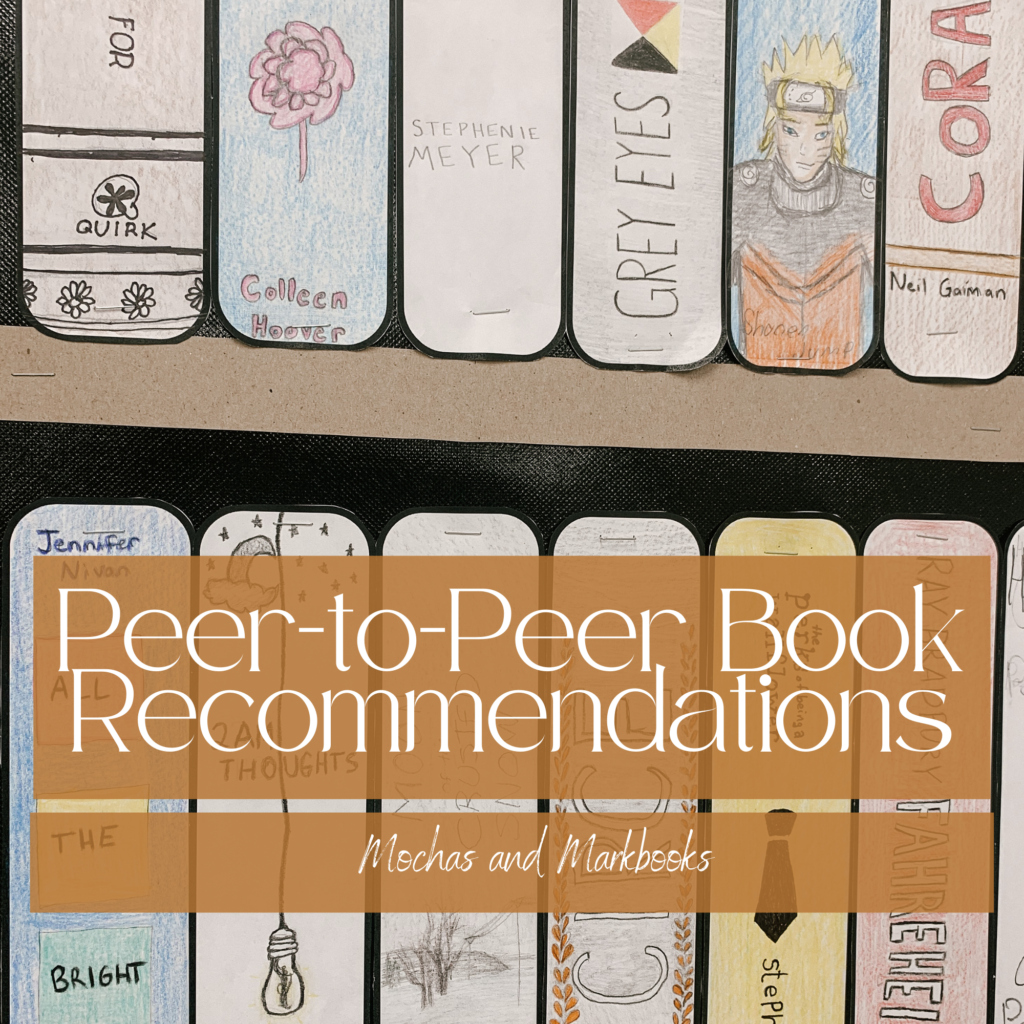
At the start of a new semester, Katie from Mochas and Markbooks loves to help her students get acquainted with her classroom and ease into a new course by moving through first day stations that will help to familiarize them with the curriculum and help to promote classroom community, growth mindset, and excitement for all things ELA!
One of the station activities that Katie started last school year became a huge hit with her students, as well as other visitors to her classroom that got to see the finished product. This activity is a book recommendation that students create for their peers on a book spine template. Students can create a book spine that resembles the actual book by emulating the font and colours of the original. If students don’t have a favourite book to recommend, no worries! Ask these students to explore the classroom library shelves to find a book that looks interesting to
them and create a book spine for that book. Hopefully the student will end up reading the book, but even if they don’t, they might entice others to read it!
Once students have created their book spines and cut them out, they can be displayed on a bulletin board like a book shelf display to promote reading, and inspire your students to read the books their classmates have enjoyed.
If you would like print-and-go book spine templates to save you time and energy before that hectic first day, check out Katie’s book spine templates here!
Who are you?
Yaddy from Yaddy’s Room loves to have students preview skills they will use in the school year, and what better way than to have them synthesize and craft arguments?
In this activity, students pick out artifacts that represent who they are in some way, like poems, artwork, music, and short stories. Then, their group mates have to draw conclusions about who they are, justifying their conclusions using information they learned from the slide.
At the conclusion of the activity, students reveal their reasoning behind choosing their artifacts.
Students love being able to display who they are creatively and then revealing who drew correct conclusions.
Yaddy likes to use this activity with all her classes and display her own artifacts as a model, serving as a great way for students to both analyze and discover more information about their teacher.
You can grab this full activity here.

On the hunt
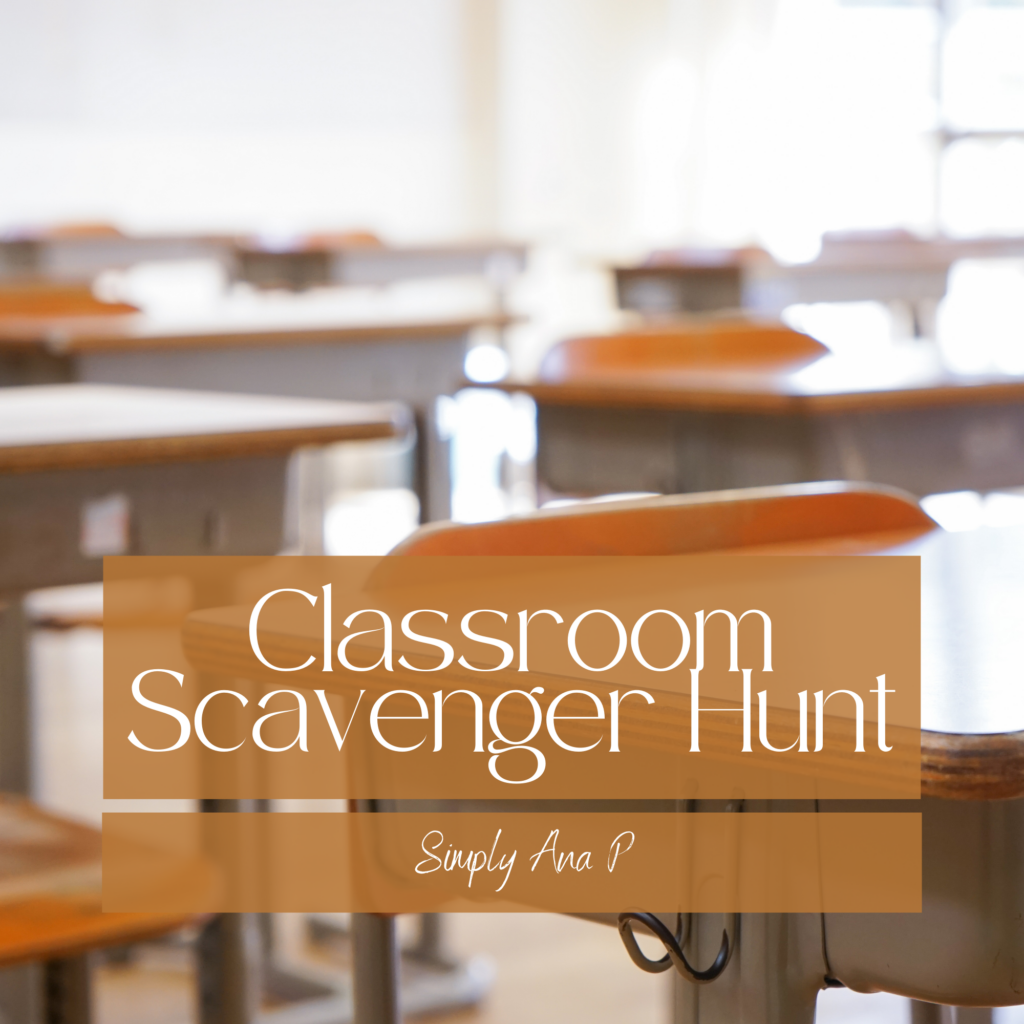
The first day/week of school is anxiety-inducing for a lot of students (and for a lot of teachers as well). Students receive an influx of information and are still woozy from summer break, and teachers are trying to get their life back together, plan for the year, finish up their classrooms, and hit the ground running.
Due to this chaotic time, Simply Ana P. likes to take a bit of a backseat on the first day of school and make observations that can help her get to know her students better, while she gets them up and moving.
A classroom scavenger hunt is the perfect activity for this. Ana will print out a class set, put each sheet on a clipboard and prep these with a pencil on each student’s desk. When the students walk in, the instructions are already displayed on the whiteboard – students are to walk around the room with their clipboards and complete the assignment.
The tasks include items like:
- Tell your teacher your favorite hobby.
- Find ‘x’ poster in the room – write the final line.
- Look through the bookshelf for a book that catches your eye. Write the title.
- Give a classmate a high five or fist bump.
- Find the writing center wall. Write down 2 tips for the perfect thesis.
As you can see, she mixes random tasks, tasks that create opportunity for interaction with peers, and tasks that are ELA-based, not only helping students familiarize themselves with the space, but also with helpful resources in it.
She’ll also throw in a few tasks to see where students are at in terms of knowledge – find the metaphor on page 30 of The Poet X – and in terms of bravery – stand on a desk chair and yell “It was all a dream!”
For struggling or reluctant students, Ana suggests some guided help or modified instructions – maybe they get to choose 10 of the 20 tasks to complete, for example. But all in all, the goal isn’t necessarily completion and definitely not a grade, but rather an overview of the type of class this will be, the students’ personalities, and their work ethic.
You’d be surprised at the results some simple observation can yield. Ana has a few more examples of other first week activities with similar styles and intent here.
Ace the Interview
Kristy from 2 Peas and a Dog likes to have her students interview each other than present their partner to the class. Many students can be shy to speak about themselves in front of the class, especially on the first day or week of school so this activity scaffolds the process.
Before class come up with a list of questions that students can ask during their interview. These can range from the traditional what is your favourite food to more creative ideas like – if you were an ice cream flavour which one would you be and why?
Ensure that there are a variety of questions so that students can share as little or as much as they want with the interviewer. Not all students are comfortable sharing much beyond the basic information during those initial times meeting as a class.

Once the interviews are complete (make sure they take notes about their new classmate) they have to present the classmate to the class. These are informal and quick presentations. No Google Slide decks are needed! Students most likely will feel comfortable sharing about someone other than themselves.
Ask audience members to write down things they have in common with the students being presented. You can use this information later to help students build connections with one another.
Check out this list of additional first-week-of-school activities.
Cooperate With Me
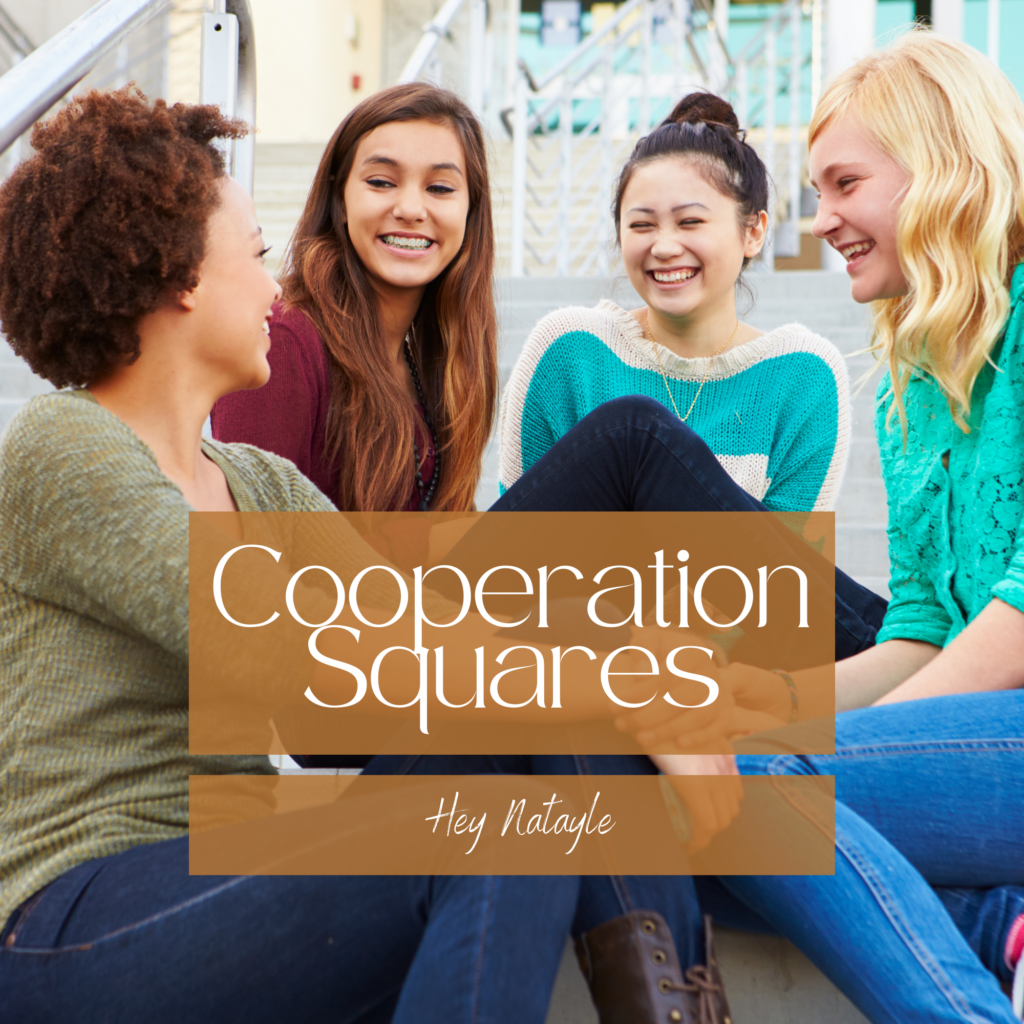
If you work in a secondary setting where students rotate through 6-8 classes in a given day, you know how difficult it can be to find first day activities that aren’t a repeat. Before jumping into anything content related, Hey Natayle likes to build community and strengthen social skills with an activity called Cooperation Squares.
With this engaging first day activity, students work together in groups of 3-5 to complete a silent mission and assemble five perfect squares before any other group.
- Quietly Energetic
- Kinesthetic
- Interpersonal Teamwork
Sounds like a win-win-win, right? It truly is.
To facilitate Cooperation Squares, each group of students receives a set of envelopes containing 3-4 random puzzle pieces. The only way to complete the mission and form five perfect squares is through nonverbal/silent cooperation. When the mission begins, students must silently strategize to share pieces and help all group members complete their squares.
When a group’s puzzle set is complete, they may observe other groups at work but may not help the members.
Natayle has found that this hands-on activity is perfect for the first day of school because it gives students the opportunity to move and engage with others without being overstimulated (a common back-to-school stress for introverts).
Want to give Cooperation Squares a try this year? Get the full scoop here.
Acting out
The first day of school is Olivia’s favorite day of the school year!
Instead of reading a list of dos and don’ts from the syllabus, Olivia from Distinguished English plays a game of classroom procedures charades, and the kids keep talking about it all year long.
Here’s how to do it:
First, think about the procedures you have for entering the classroom, using the restroom, asking a question, borrowing school supplies, etc.
Type up one card with the correct way to accomplish each task and one card with the incorrect way.
Then on the first day, give each student a card and ask them to act out what it says, one person at a time.
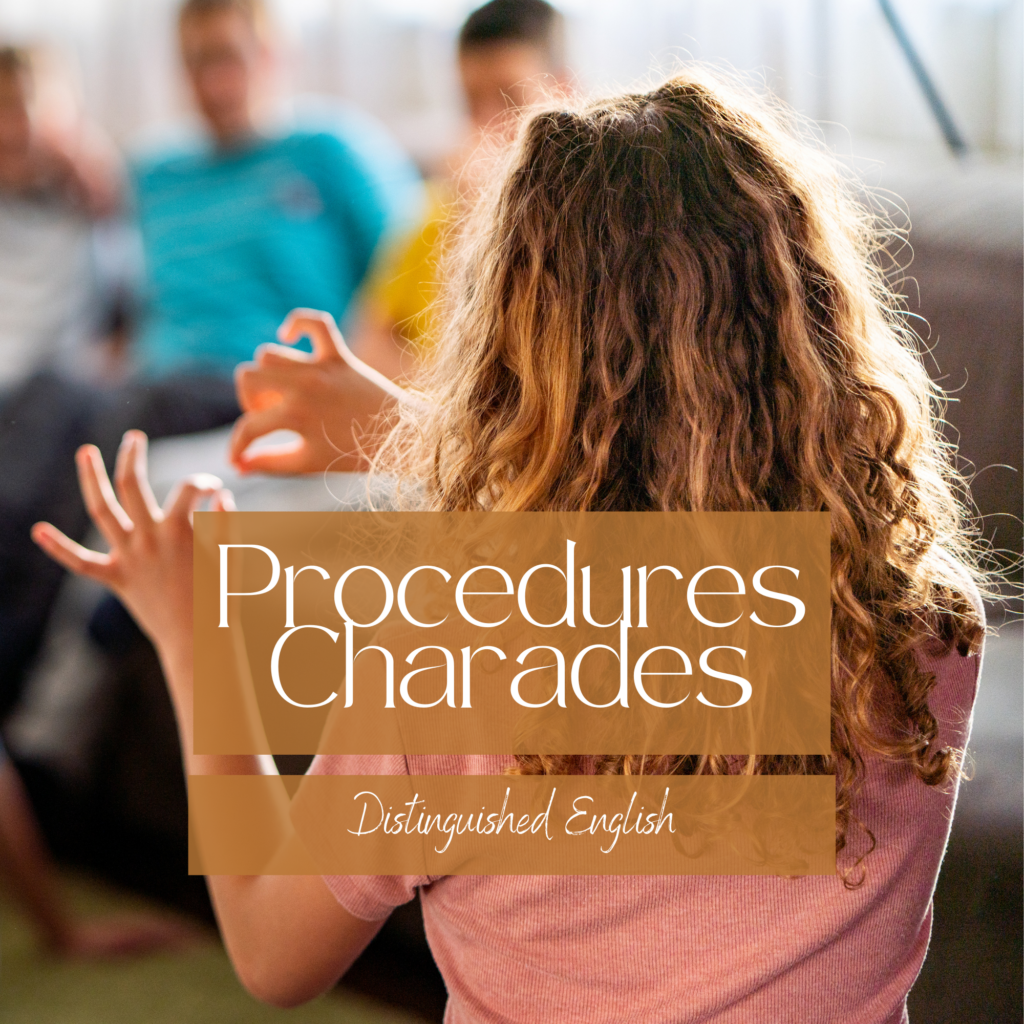
Ask the class to discuss the differences between the “right” way and “wrong” way to do each procedure.
The kids laugh and have a good time, but they really remember those expectations!
Want to save some time? Check out these pre-made Procedures Game Cards.
Speed it up!
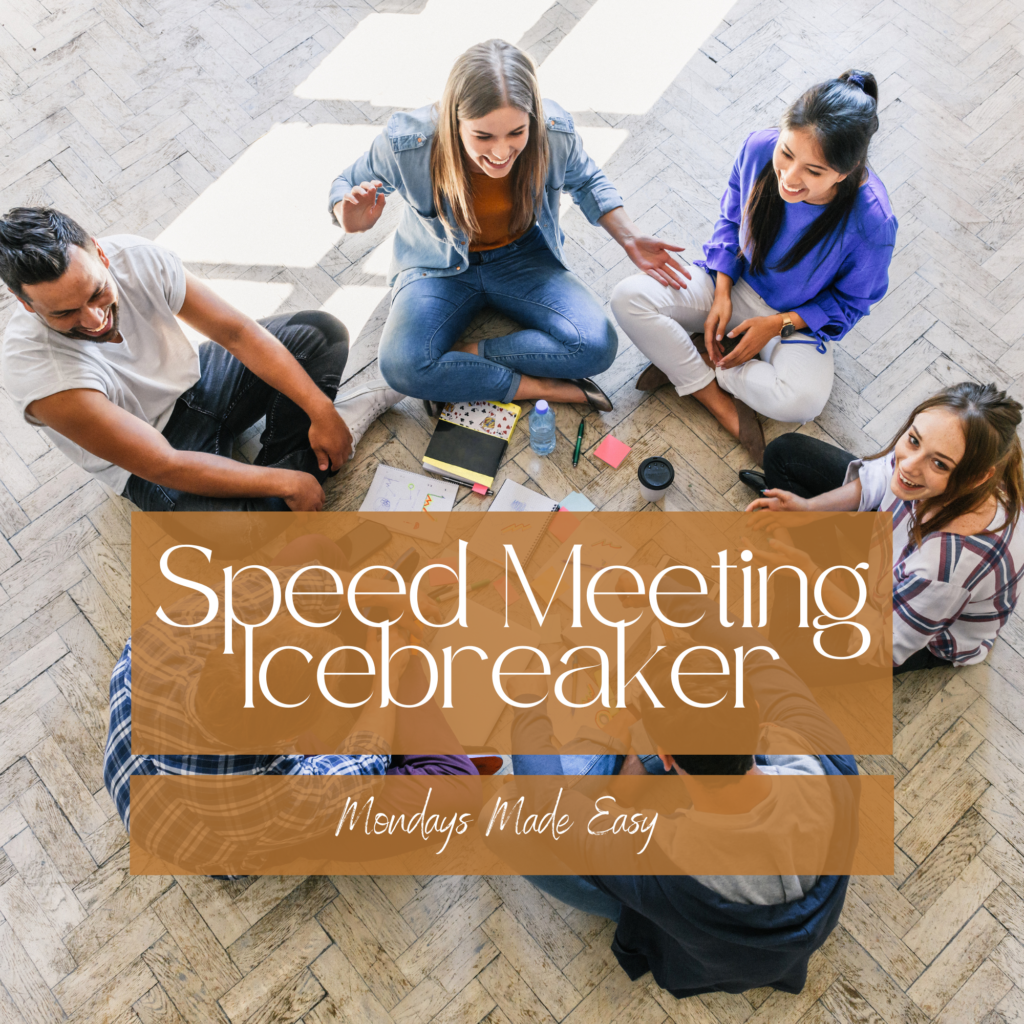
Do you know the game “We’re Not Really Strangers?” It’s a card game with questions that are designed to encourage people to foster meaningful connections through thought-proving questions. If you haven’t heard of this game, you’ve probably played some variation of it – card-based question games are a great way to break the ice!
Daina from Mondays Made Easy loves to play a school-appropriate version of “We’re Not Really Strangers” using this Speed-Meeting Icebreaker Game. This game includes 30 get-to-know-you questions to get students chatting about relevant and engaging topics for teens.
To play, you can seat students in pairs at a circle of desks. Place a few icebreaker questions at each desk and set a timer. Students can have a set amount of time to discuss the icebreaker questions before rotating to a new station with new questions.
The easiest way to do this is to have students in the inner circle move to the left after the first round, then have the students in the outer circle move to the right after the next round, etc.
Another option: For the first few days of school, create new groups of students at the start of class. Select a new set of icebreaker questions for each day, and have different groups of students discuss them. This is a great option if you’d like to incorporate icebreaker activities over an extended period of time.
Hopefully these ideas will save you some stress and planning before the first day of class. If you’re able to try out some of these activities make sure to let us know how it goes! Comment below or connect with any of these contributors on their instagrams.
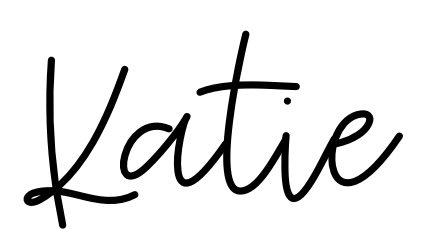
Leave a Reply Cancel reply
© Mochas and markbooks 2025 | Template by Waymaker Designs |